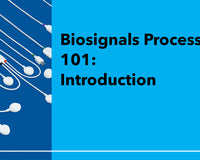Electroencephalography (EEG) is a pivotal tool in modern medicine, offering unparalleled insights into the brain’s electrical activity. By analyzing the unique electrical impulses generated by neurons, EEG provides a non-invasive, reliable way to diagnose, monitor, and understand a variety of neurological and systemic conditions. This guide will explore how EEG works, its applications, and its benefits for medical investigations.
How Does EEG Work?
EEG operates by capturing and recording the brain's electrical activity. Here's a breakdown of the process:
- Electrodes and Signal Detection: Small metal discs, known as electrodes, are affixed to the scalp using conductive paste. These electrodes detect the rapid low-amplitude electrical impulses generated by neuronal communication in the brain.
- Signal Recording: The electrical activity is translated into wavy patterns and displayed on a monitor. These waves represent different brain states, such as relaxation, focus, or abdominal activity, and are analyzed for irregularities.
- Bipolar Configuration for Focused Measurement: Advanced EEG setups, like the biosignalsplux EEG sensor, employ a bipolar configuration. This involves two measurement electrodes and a reference electrode placed on regions of low muscular activity. The amplified difference between these electrodes isolates the electrical activity specific to the monitored brain region.
- Non-Invasive and Adaptable: EEG is a painless, non-invasive procedure. For localized studies or experimental setups, single-lead EEG sensors provide flexibility, especially in scenarios where a full EEG cap might be intrusive.
Key Applications of EEG in Medicine
EEG is a versatile tool used in diagnosing and managing numerous neurological and systemic conditions. Its applications include:
- Epilepsy and Seizure Disorders: EEG is instrumental in detecting abnormal brain activity patterns that are indicative of epilepsy or seizure conditions.
- Sleep Disorders: EEG helps identify irregularities in brain waves during different sleep stages, aiding in diagnosing insomnia, sleep apnea, and other sleep-related conditions.
- Brain Tumors and Injuries: By detecting disruptions in normal brainwave activity, EEG assists in diagnosing brain tumors and assessing damage from head injuries.
- Neurological Diseases: Conditions like encephalopathy, Creutzfeldt-Jakob disease, and brain inflammation (e.g., encephalitis) are often evaluated with EEG for abnormal electrical activity.
- Stroke Analysis: EEG can reveal changes in brain activity following a stroke, helping in post-event evaluations and recovery planning.
Benefits of EEG for Medical Investigations
1. Real-Time Monitoring: EEG captures live data on brain activity, enabling clinicians to observe real-time changes during various tasks or stimuli.
2. Non-Invasive Diagnostics: Unlike imaging techniques, EEG does not involve radiation or invasive procedures, making it a safer option for long-term monitoring.
3. Localized and Adaptable Analysis: Modern EEG sensors, like the biosignalsplux EEG, allow localized monitoring, which is particularly useful for research involving specific brain regions or in combination with other biosensors.
4. Enhanced Experimental Flexibility: Single-lead EEG sensors are ideal for scenarios requiring minimal interference, such as experiments involving visual or auditory stimuli.
5. Cost-Effective and Accessible: Compared to advanced imaging methods like fMRI, EEG is more affordable, portable, and widely available.
Innovations in EEG: Biosignalsplux EEG Sensors
Biosignalsplux offers cutting-edge EEG solutions designed for precision and adaptability. Their single-lead EEG sensors are tailored for localized monitoring, allowing researchers to combine EEG with other sensor types. These sensors enable studies on cerebral activity changes resulting from specific stimuli, offering applications in neuroscience, cognitive research, and experimental psychology.
Conclusion
EEG remains a cornerstone in neurological diagnostics and research, providing valuable insights into the complex workings of the brain. From diagnosing life-altering conditions to supporting innovative research, its applications are vast and transformative. With advancements in sensor technology, the potential for EEG in medical investigations continues to expand, unlocking new frontiers in brain science.
Unlock the full potential of EEG in your medical research or practice with biosignalsplux. Discover cutting-edge sensors designed for localized and adaptable brain activity monitoring—perfect for modern neurological investigations. Learn more today!












